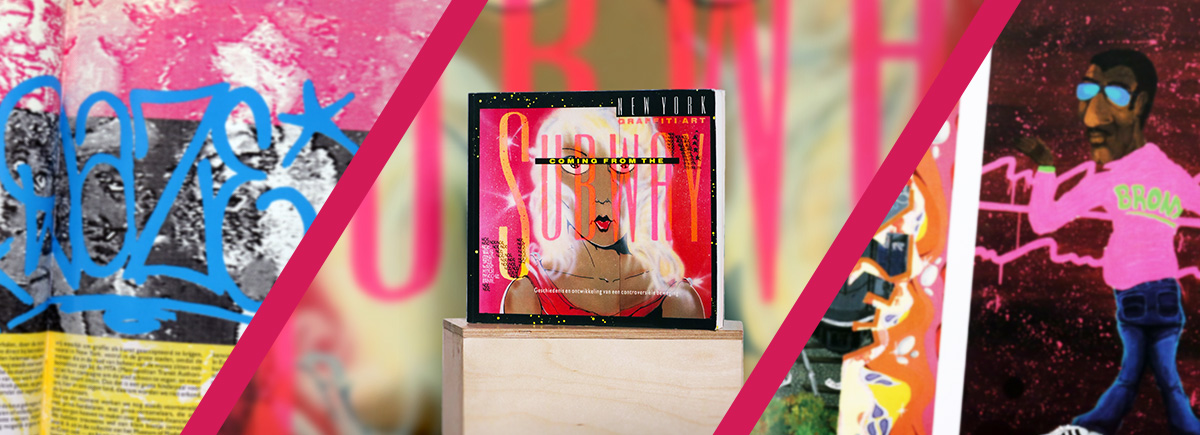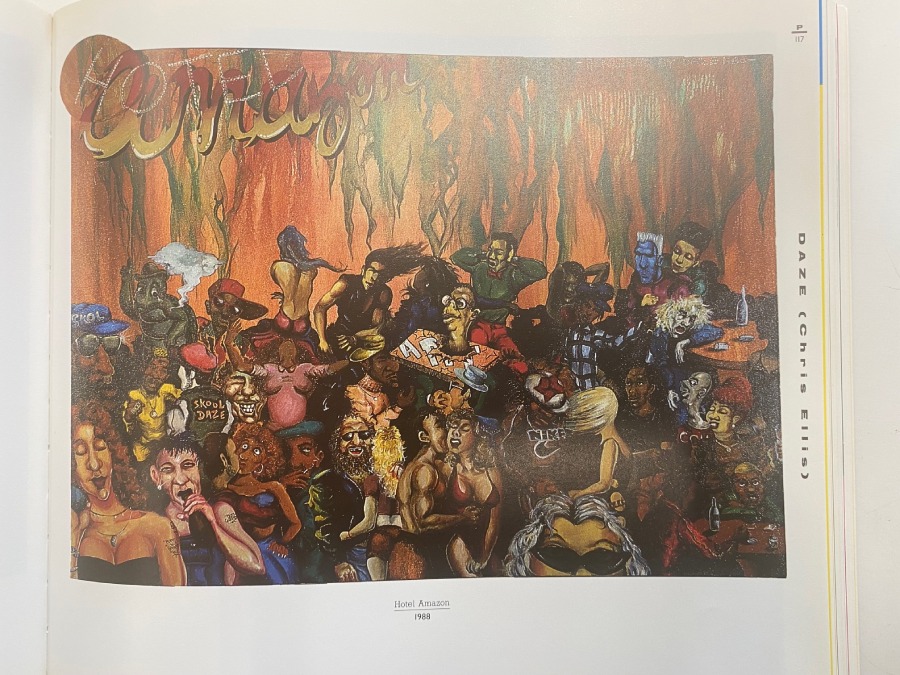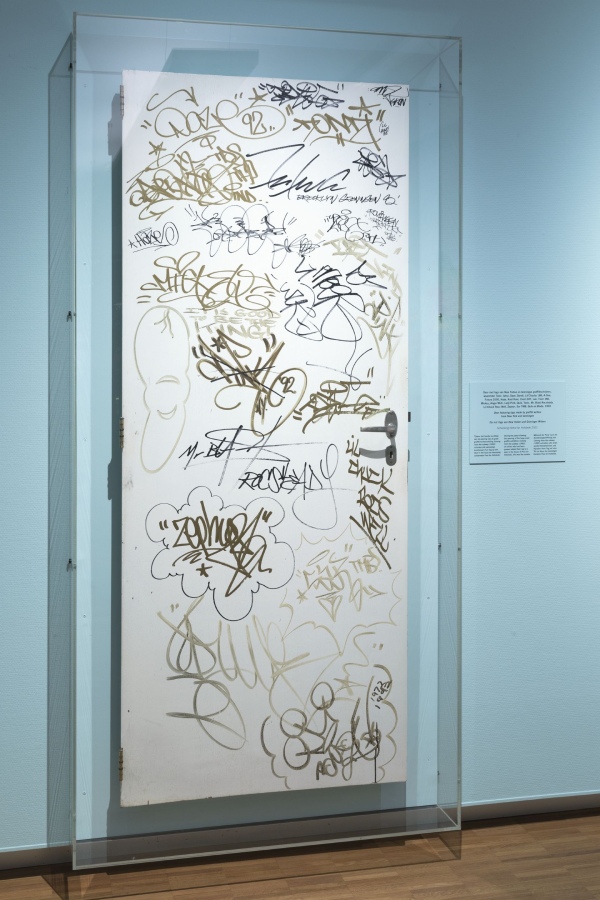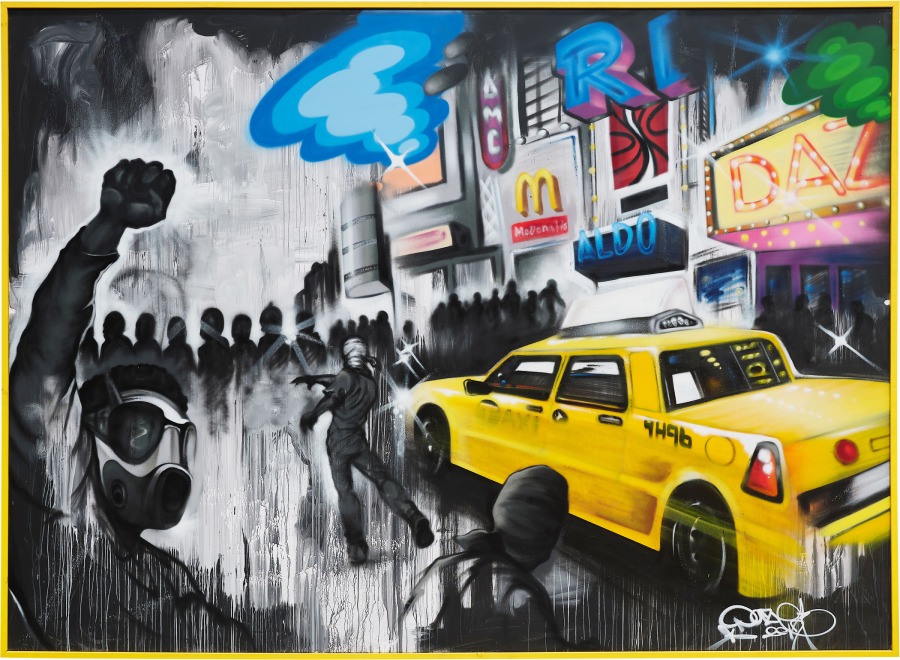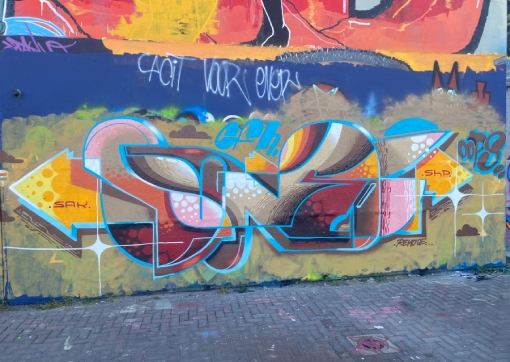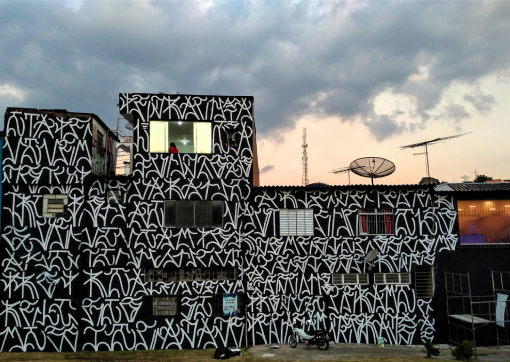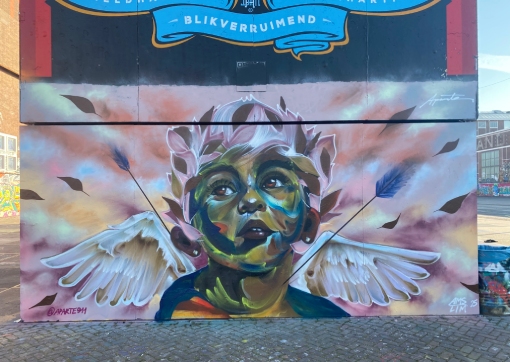STRAAT is proud to continue the efforts of our predecessors when it comes to showcasing graffiti and street art as a gallery-worthy and museal artform. Which is why we will revisit several exhibitions from the past that laid the foundation for what we are able to do today, in a series of articles called STRAAT pays homage. Remember: if you don’t know where you’re coming from, you don't know where you’re going…
Today, October 4th, 2022, marks a special occasion for another STRAAT pays homage edition, as we’re celebrating the 30 year anniversary of the Coming from the Subway: New York Graffiti Art exhibition at the Groninger Museum. This iconic exhibition was on show until January 10th, 1993. Last year, the Groninger Museum revisited their legendary 1992 exhibition with another graffiti art exhibition, featuring big names from both New York City and Groningen.
Up until let's say 12 years ago, when it really started becoming much more common for graffiti art to be exhibited in prestigious galleries and museums worldwide, this was considered one of the absolute peaks in graffiti art history. It actually still is. Let’s once again take a closer look at what was said in the catalog’s introduction by then museum director Frans Haks (translated from Dutch):
“When we look at the phenomenon of graffiti with an art history gaze, it has to be noted that it concerns a new genre that seamlessly fits into history. From the very start, it entailed new work with a new theme, a new technique and a new bearer. In other words, the signature, normally placed on a canvas to indicate who made it, has become the main subject. What was once a subordinate but functional part of a painting, has been promoted to main subject. This is no new phenomenon. The landscape, for instance, served a purpose as the backdrop to a religious scene in the middle ages, but grew to become a focus point over the course of the 1500s….
A similar development is visible when we look at the self portrait of an artist. During the middle ages, artists would often depict themselves on a small scale in the corner, often as a substitute for the signature. This habit leads to the genre of self portraits in the early 1500s. It even becomes a new movement in the 1970s - Body art - where the artist himself/herself personally performs at visual material.”
Chris DAZE Ellis in the catalog
It is noteworthy that graffiti is compared to and linked to earlier developments within art history here. Just like the landscape and the self portrait, the signature - or as we would say, the tag - went from a subordinate but functional part to main focus. By making comparisons with earlier changes in art history, museum director Frans Haks legitimizes graffiti as a museal art form. He then also praises the quality of the work:
“Choosing your name as the theme for a painting has its parallels in art history. And once you do that, it’s a logical consequence - especially when you come from a minority background - that you don’t pick a traditional carrier such as a canvas on a stretcher frame, but a carrier that everyone can see: the subway.
If that name is then applied not with oil paint on brush but by spray can, a new theme is born: graffiti, naturally.
Objectively speaking, all demands are met to speak of a new genre, being Graffiti Art. And subjectively I’d like to add that I find it to be of the very highest quality, comparable to Minimal Art, Land Art, Body Art and Conceptual Art.”
Door tagged by DAZE, DONDI, ZEPHYR, BLADE, MICKEY and more at Coming from the Subway's opening night afterparty, currently on display at the Groninger Museum. Recently donated by then-curator Poul ter Hofstede's widow.
Haks also explains why he’s organized another Graffiti Art exhibition, after the previous shows in the Groninger Museum and Boymans van Beuningen museum in 1983/1984.
“In 84, the choice of exhibited works was based on works that were in Dutch possession, a limitation we chose to avoid this time ‘round. On top of that, the artists have further developed their themes and styles, on the one hand because that’s what good artists always do, and on the other hand because of the fact that in this specific case, the relationship between the own name and its unique carrier, the subway train, had to be broken.”
Haks constantly speaks of ‘the artists’. But they’re more than just artists, they’re artists that meet Haks’ demands for what makes a good artist. The style and themes have further developed. On top of that, the relationship with the traditional carrier, the subway train, has been broken. Graffiti artists resemble ‘real’ artists in everything. They are producing museum-worthy artworks.
Chris DAZE Ellis' work in our STRAAT collection
Finally, Haks compares graffiti art to other genres such as Cubism and Fauvism.
“We made the conscious decision to use the term Graffiti Art to describe this movement, instead of descriptions such as Post-Graffiti or Spraycan Art. While Graffiti Art may have a negative connotation, in particular in the US, this originally also could be said for terms such as Cubism and Fauvism, which were used as derogatory terms for these new movements, but over time became very well respected descriptions. I have no doubt that Graffiti Art will experience the same.”
Aside from constantly speaking of Graffiti ART, it’s also worth noting that Haks, as museum director, subjectively shares his appreciation of graffiti. If you’ve ever seen the catalog for Coming from the Subway, you wouldn’t be surprised regarding this appreciation: it is a stunning reference book. Beautifully designed, and flawless on the content tip. Aside from an elaborate history, it also holds interviews with former New York mayor Ed Koch (from the iconic Dump Koch subway), a personal story by Stefan Eins, founder of the legendary Fashion Moda gallery, a history of European graffiti, a chronicle of critical reviews on graffiti art, and reactions from critics, collectors and curators regarding different exhibitions, titled ‘a few thoughts on graffiti art’.
By linking graffiti to earlier trends in art history, Frans Haks solidifies graffiti as art. It’s not just the intrinsic qualities of the works that makes them museum worthy, it’s also because of the bigger picture where graffiti relates to genres such as Fauvism and Cubism, that plays its role. On top of that, graffiti is linked to the self portrait and the landscape, elements of the artwork that originally were subordinate, but eventually became the main focus. Graffiti art does the exact same with the signature.
As a modern-day museum for street art and graffiti, we can’t thank Frans Haks and Groninger Museum enough for their groundbreaking work in the early 80’s and beyond. We feel honored to continue this legacy of Dutch graffiti art history, and we’re already looking forward to the 50 year anniversary.
---
Article by Alex Pope
Pictures: STRAAT / Groninger Museum
